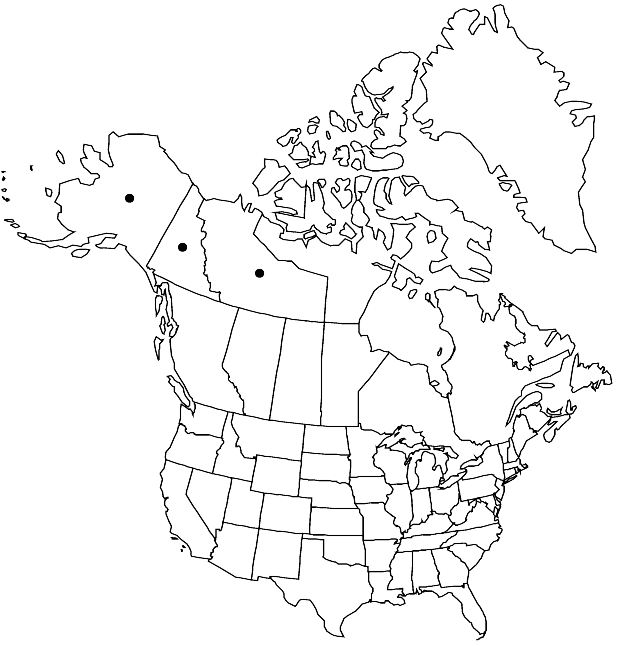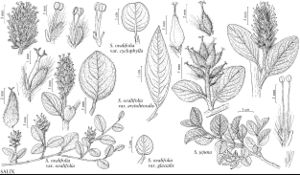Salix ovalifolia var. ovalifolia
Leaves: petiole 2–7 mm; largest medial blade elliptic, broadly elliptic, or subcircular, 13–28 × 7–18 mm, 1.1–2.2 times as long as wide, base subcordate, cordate, rounded, or convex, apex convex, rounded, or acute, abaxial surface glabrous, pilose, sparsely villous, or long-silky. Catkins: staminate 9.5–21 × 5–10 mm, flowering branchlet 2–7 mm; pistillate stout, subglobose, globose, or slender, 11.5–50 × 6–18 mm, flowering branchlet 3–21 mm. Staminate flowers: abaxial nectary 0.6–1 mm, adaxial nectary 0.6–1.6 mm, nectaries distinct or connate and cup-shaped. Pistillate flowers: abaxial nectary present or absent, adaxial nectary ovate, oblong, or narrowly oblong, 0.5–2 mm, nectaries connate and cup-shaped; stipe 0.2–1.4 mm; ovary glaucous or not, usually glabrous, sometimes pubescent, or villous. Capsules 5.2–6.5 mm.
Phenology: Flowering early Jun-early Aug.
Habitat: Arctic and subarctic, coastal sandy gravel spits
Elevation: 0-150 m
Distribution

N.W.T., Yukon, Alaska, Asia (Chukotka, Russia).
Discussion
Selected References
None.
